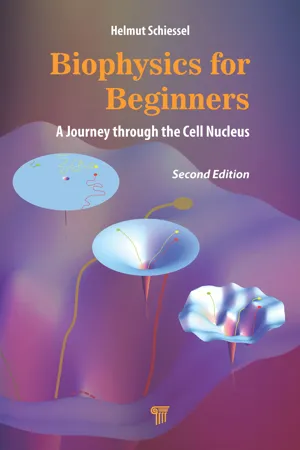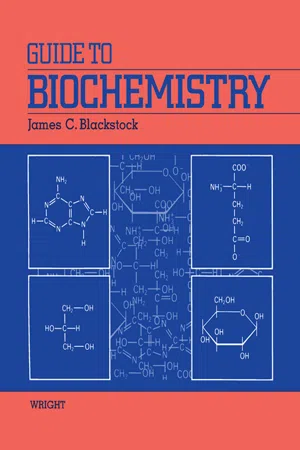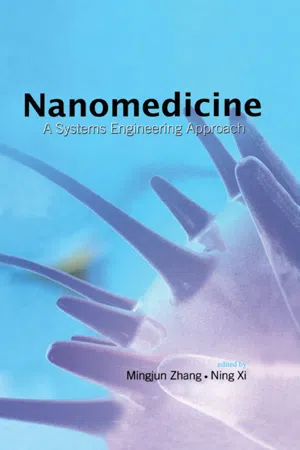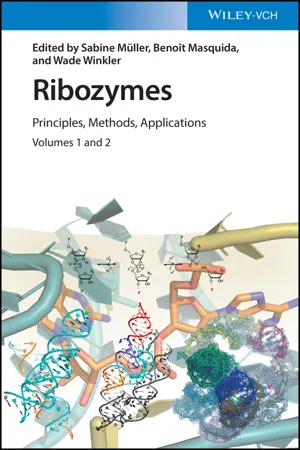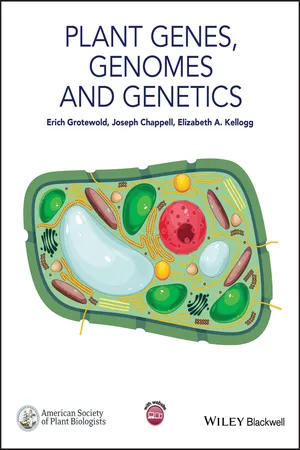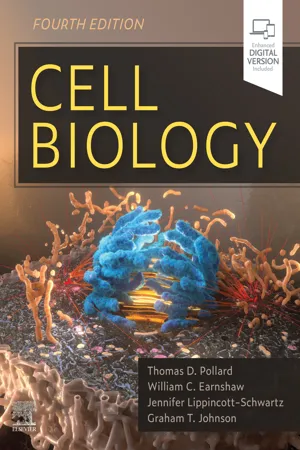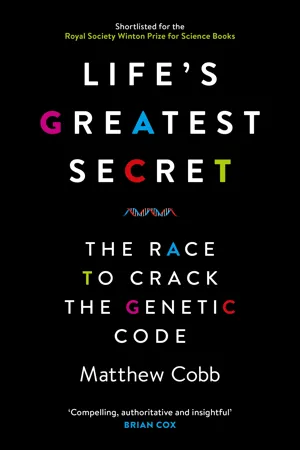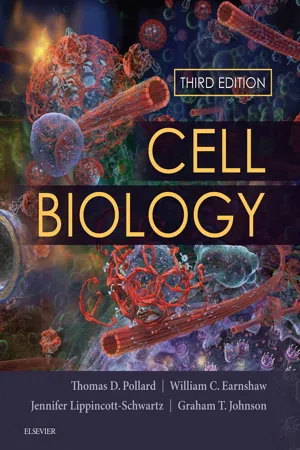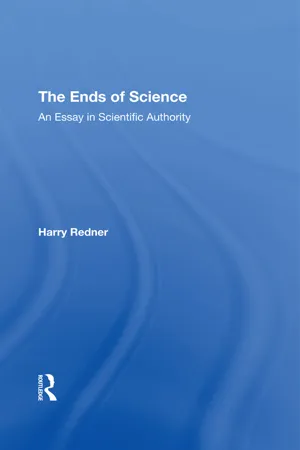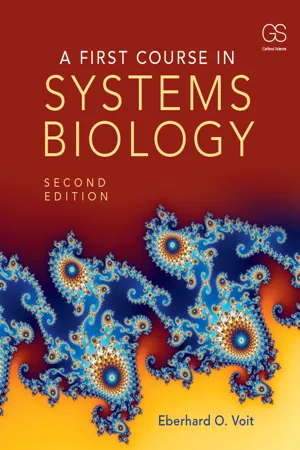Chemistry
Central Dogma
The Central Dogma of molecular biology describes the flow of genetic information within a biological system. It states that genetic information is transcribed from DNA to RNA, and then translated from RNA to proteins. This process is fundamental to understanding how genetic information is expressed and utilized within living organisms.
Written by Perlego with AI-assistance
Related key terms
10 Key excerpts on "Central Dogma"
- eBook - ePub
Biophysics for Beginners
A Journey through the Cell Nucleus
- Helmut Schiessel(Author)
- 2021(Publication Date)
- Jenny Stanford Publishing(Publisher)
Chapter 1Molecular Biology of the Cell
1.1 The Central Dogma of Molecular BiologyAn introduction to the fundamentals of the molecular biology of the cell would easily fill this book. Instead, I shall focus on one set of problems in molecular biology that Francis Crick, one of the discoverers of the DNA double helix, has termed the Central Dogma of molecular biology. This Central Dogma states that there are three types of crucial biological macromolecules, DNA, RNA and proteins, that “communicate” in such a way that genetic information flows in the single direction from DNA to RNA to proteins. Figure 1.1 specifies the different steps of that information flow, which we will discuss below.Figure 1.1 The Central Dogma of molecular biology: information flows from DNA to RNA to proteins. The DNA molecules contain the complete genetic information of the cell in the form of genes which are often separated by pieces of “junk” DNA. Each gene is a building plan of a protein. Whenever a cell needs a certain protein, a transcript of its gene is made in the form of an RNA copy. This copy is then used as blueprint to assemble the protein. Also shown are enlarged portions of the three types of macromolecules: DNA and RNA are chemically very similar, except DNA is double stranded whereas RNA is single stranded. Proteins are chemically very different and are made from a sequence of amino acids (aa's). The physical properties of these aa’s cause the protein to fold in a unique three-dimensional shape.The whole genetic information about a cell, its genome, is written down in one or several DNA molecules (DNA stands for DeoxyriboNucleic Acid). When a cell divides, the information must be passed on to its two daughter cells, and therefore the DNA needs to be replicated before the division can take place. To understand how elegant nature’s solution to replication works, we first need to discuss the structure of the DNA chain itself. The genetic text on the DNA chain is made from four letters, the nucleotides: adenine (A), guanine (G), cytosine (C) and thymine (T). These letters are chemically linked into a one-dimensional chain producing a text like AAGCTTAG, but much, much longer. A DNA molecule in a cell carries this information not only once, but effectively twice, since it occurs in a double-stranded form. The two DNA strands are linked via hydrogen bonds through base pairing such that an A is always paired with a T and a G with a C. So our AAGCTTAG strand will be paired with a TTCGAATC strand (more precisely CTAAGCTT, since each strand has a chemically built-in direction and the two strands run anti-parallel). Therefore, the two strands are not identical, but they carry exactly the same genetic information. To duplicate the DNA, the double stranded chain just needs to be unzipped and each strand used as a template to convert it back to a double stranded molecule using the base pairing rules, see Fig. 1.2 - eBook - ePub
- James C. Blackstock(Author)
- 2014(Publication Date)
- Butterworth-Heinemann(Publisher)
CHAPTER 17Gene expression
Publisher Summary
This chapter presents the concept of gene expression. The concept of the Central Dogma of molecular biology, formulated in the late 1950s by Francis Crick may be summarized as DNA (deoxyribonucleic acid) →RNA (ribonucleic acid) →protein. Transcription is the process in which RNA is synthesized by enzymes called DNA-directed RNA polymerases. These enzymes use ribonucleoside triphosphates as substrates and DNA as a template. Specific base sequences signal the termination of transcription. Transcription produces RNA molecules. Translation involves two compartments: the cytosol in which individual amino acids are enzymically attached to their specific tRNAs by amino-acid-tRNA ligases and the ribosomes in which the amino acids are correctly positioned according to the base sequence of a mRNA template and polymerized into polypeptide chains. As there are four major bases in mRNA, 43 different codons are possible. The 64 triplets constitute the genetic code. The genetic code applies to prokaryotes and eukaryotic nuclear and chloroplast mRNAs but not to mitochondrial mRNAs. Therefore, the genetic code is quasi-universal.17.1 The Central Dogma
The concept of the Central Dogma of molecular biology (Section 1.6 ), formulated in the late 1950s by Francis Crick may be summarized as DNA (deoxyribonucleic acid) → RNA (ribonucleic acid) → protein.In all living organisms, nuclear DNA serves as the reservoir of genetic information which is expressed in terms of the structure of proteins manufactured by the cell. The base sequence of the DNA determines the amino acid sequence of proteins which are responsible for all aspects of cellular function. Because of cellular organization, synthesis of protein from the DNA blueprint occurs in two stages: transcription, i.e. the synthesis of a messenger RNA molecule of a structure complementary to the structure of DNA so that the genetic information is transferred to mRNA, and upon delivery of the message to the cytosol, its translation into protein. - eBook - ePub
Nanomedicine
A Systems Engineering Approach
- Mingjun Zhang, Ning Xi, Mingjun Zhang, Ning Xi(Authors)
- 2019(Publication Date)
- Jenny Stanford Publishing(Publisher)
The Central Dogma describes the flow of genetic information from DNA to RNA to proteins, which forms the backbone of molecular biology. In the first step of this process, DNA replicates itself. Then the DNA sequence in a gene copies its information to the messenger RNA (mRNA), which then passes genetic messages to a ribosome, which “reads” this information and uses it for protein synthesis. This entire process is called general transfers. On the other hand, there also exist special or unknown transfers in the Central Dogma. For example, inverse transcription, RNA replication, and direct transfers from DNA to proteins are examples of special transfers, and prions are the special cases of unknown transfers.3.1.1 The Central Dogma of Molecular BiologyThe Central Dogma of Molecular Biology was proposed by Francis Crick in 195812 and then was restated in his Nature paper in 1970.13 The main idea of the Central Dogma is that once “information” has passed into protein it cannot get out again, i.e., information transformation is possible only from nucleic acid to itself, or to proteins, but impossible from proteins to itself, or to nucleic acid. Information here means the character-based sequences of nucleic acid for DNA, RNA, and amino acid for proteins.The Central Dogma of Molecular Biology describes the frame in which the sequential information transfers among semantophoric biopolymers consecutively. In general, there are three classes of biopolymers in live organisms: DNA, RNA and proteins. Theoretically, there exist nine possible transformations between any two of them. Those transformations are divided into three classes, general transfer, special transfer, and unknown transfer. General transfer happens in usual biological processes; special transfer occurs only where viruses are involved or in the laboratory; while unknown transfer is a theoretical class that has not been detected. The three classes of transfers are shown in Table 1 - eBook - ePub
Ribozymes
Principles, Methods, Applications
- Sabine Müller, Benoît Masquida, Wade Winkler, Sabine Müller, Benoît Masquida, Wade Winkler(Authors)
- 2021(Publication Date)
- Wiley-VCH(Publisher)
8 The Ribosome and Protein SynthesisPaul HuterMichael Graf and Daniel N. WilsonUniversity of Hamburg, Institute for Biochemistry and Molecular Biology,, 20146 Hamburg, Germany8.1 Central Dogma of Molecular Biology
Conservation of the genome, its transfer, and faithful implementation of the information stored within are fundamentally important steps in every cell. About 50–60 years ago, the Central Dogma of molecular biology gained prominence for establishing the sequential occurrence of these vital events and their interconnectedness [1 , 2 ]. The classical view describes a consecutive order of events, in which deoxyribonucleic acid (DNA ) can either replicate itself to maintain the genomic integrity (replication) or transfer its information into ribonucleic acid (RNA ) molecules (transcription), which in turn serve as templates for the synthesis of proteins (translation). Together, replication, transcription, and translation form the three founding pillars of the dogma of molecular biology. This model is valid to this day; however, extensive studies over the past decades have broadened our understanding of the molecular mechanisms behind it. Both replication and transcription require the recruitment of macromolecular machines. While replication of the genome requires the action of DNA polymerases, transcription of information from DNA to RNA is mediated by RNA polymerases. RNA molecules are a heterogeneous population that fulfill various roles in a cell and can be divided into two major classes, namely, noncoding RNA (ncRNA ) and messenger RNA (mRNA ). Recent studies have shown that ncRNAs pursue different functions such as catalysis of chemical reactions (e.g. ribosomal RNA [rRNA ]), serving as adaptor molecules (e.g. transfer RNA [tRNA ]) or structural scaffolds (e.g. rRNA) and regulating gene expression (e.g. micro RNA [miRNA ]) [3 , 4 ]. On the other hand, mRNAs contain the information of genes, which can be decoded and translated into proteins. This process is called translation and is mediated by ribosomes. In contrast to the other two molecular machines, the ribosome consists predominantly of rRNA, and the structural and mechanistic themes of the core components are conserved among the three phylogenetic kingdoms of life. However, there are certain differences between, and as well as within, each kingdom concerning size, regulation, and composition, to name but a few [5 , 6 ]. Here we focus exclusively on the prokaryotic ribosomal machinery of Escherichia coli. Unless mentioned otherwise, all ribosomes within this chapter refer to the E. coli - eBook - ePub
- Erich Grotewold, Joseph Chappell, Elizabeth A. Kellogg(Authors)
- 2015(Publication Date)
- Wiley-Blackwell(Publisher)
Yet, as will be described below, it is now clear that information can also flow from RNA to DNA, and thus the Central Dogma is not as unidirectional as originally thought. RNA plays a central role in this flow of information. However, we will also see that RNA has a number of other fundamental cellular functions, including structural and catalytic roles. A typical eukaryotic cell, such as a plant cell, carries many distinct types of RNA molecules, which can be differentiated by some unique characteristics (Figure 6.2 and Table 6.1). Messenger RNA (mRNA), corresponding to just 2–4% of the total RNA in the cell, conveys the bulk of the genetic information from the DNA to the proteins. mRNAs can range in size from a few hundred to several thousand nucleotides. They typically carry a cap at the 5′ end, consisting of modified guanine nucleotide and a 3′ tail formed by up to several hundred adenosine nucleotides (polyA tail). RNA modifications are discussed at the beginning of Part 3 of this book, and mRNAs are a main focus of Chapter 8. Figure 6.1 The Central Dogma of Biology. Arrows indicate the flow of information Figure 6.2 Diagrams showing main characteristics of various RNAs (tRNA, rRNA and mRNA). The different colors in the tRNA illustrate the various arms and loops. For example, the orange corresponds to the D arm and loop, the red corresponds to the anticodon arm and loop, the green corresponds to the T arm and loop, and the blue corresponds to the amino acid acceptor arm (the amino acid gets covalently linked to the 3′ end, which harbors the –OH group) - eBook - ePub
- Thomas D. Pollard, William C. Earnshaw, Jennifer Lippincott-Schwartz, Graham Johnson(Authors)
- 2022(Publication Date)
- Elsevier(Publisher)
Section IVCentral Dogma: From Gene to Protein
SECTION IV OVERVIEW
T he hugely important prediction of a structure for DNA not only led Crick and Watson to propose a general strategy for the replication of DNA (discussed in Chapter 43 ) but also led Francis Crick to propose the Central Dogma of molecular biology: that DNA is transcribed into RNA and that this RNA is then translated into protein. Chapters 10 to 12 present how this Central Dogma plays out at the cellular level, with one crucial addition that could not have been foreseen by Crick. This new element is the complex battery of processing events that RNAs undergo before they function as messengers, transfer vehicles, processing machines, or protein synthesizing machines in the ribosome.Chapter 10 discusses how DNA sequences are transcribed (copied) into RNA, the initial step in recovering the information encoded in the genome. Eukaryotic cells have three DNA-dependent RNA polymerases with specialized tasks: polymerase I transcribes ribosomal RNAs; polymerase II transcribes all messenger RNAs (mRNAs) plus a number of small RNA molecules involved in RNA processing; and polymerase III transcribes transfer RNAs (tRNAs) and the smallest ribosomal RNAs. These three polymerases evolved from a common ancestor and retain many shared features. However, they have acquired significant differences in the ways they act on their target genes.Eukaryotic genes contain both upstream (5′) and downstream (3′) regulatory regions that are not transcribed into RNA. Each gene has a promoter located just upstream from the site where transcription begins. Enhancers - eBook - ePub
Life's Greatest Secret
The Race to Crack the Genetic Code
- Matthew Cobb(Author)
- 2015(Publication Date)
- Profile Books(Publisher)
22 This was the ‘Central Dogma’: once information had gone from DNA into the protein, it could not get out of the protein and go back into the genetic code.*Crick had first come up with the ‘Central Dogma’ phrase and its underlying concept in October 1956, in a set of notes entitled ‘Ideas on protein synthesis’.23 These were not circulated – not even to the RNA Tie Club – but they formed the basis of his discussions with his colleagues and his thinking over the following months. In those original notes – but not in either of the published forms of his talk – Crick included a little diagram to show what he meant.On the original note, Crick playfully wrote ‘The doctrine of the Triad’ (DNA, RNA and protein), but he soon coined the more dramatic term ‘Central Dogma’. As was evident from his presentation of the idea in 1957, it was not, strictly speaking, a dogma (a fundamental belief that cannot be questioned). It was instead a hypothesis, and rather than being based on any a priori position, it was simply based on the available data. Crick later recalled:5. Crick’s first outline of the Central Dogma, 1956, http://profiles.nlm.nih.gov/ps/access/SCBBFT.pdfI called this idea the Central Dogma, for two reasons, I suspect. I had already used the obvious word hypothesis in the sequence hypothesis, and in addition I wanted to suggest that this new assumption was more central and more powerful. I did remark that their speculative nature was emphasized by their names. As it turned out, the use of the word dogma caused almost more trouble than it was worth. Many years later Jacques Monod pointed out to me that I did not appear to understand the correct use of the word dogma, which is a belief that cannot be doubted. I did apprehend this in a vague sort of way but since I thought that all religious beliefs were without any serious foundation, I used the word in the way I myself thought about it, not as most of the rest of the world does, and simply applied it to a grand hypothesis that, however plausible, had little direct experimental support.24 - eBook - ePub
- Thomas D. Pollard, William C. Earnshaw, Jennifer Lippincott-Schwartz, Graham Johnson(Authors)
- 2016(Publication Date)
- Elsevier(Publisher)
Section IV Central Dogma: From Gene to ProteinOutlineSection IV Overview Chapter 10 Gene Expression Chapter 11 Eukaryotic RNA Processing Chapter 12 Protein Synthesis and FoldingPassage contains an image
Section IV Overview
T he hugely important prediction of a structure for DNA not only led Crick and Watson to propose a general strategy for the replication of DNA (discussed in Chapter 42 ) but also led Francis Crick to propose the Central Dogma of molecular biology: that DNA is transcribed into RNA and that this RNA is then translated into protein. Chapters 10 to 12 present how this Central Dogma plays out at the cellular level, with one crucial addition that could not have been foreseen by Crick. This new element is the complex battery of processing events that RNAs undergo before they function as messengers, transfer vehicles, processing machines, or protein synthesizing machines in the ribosome.Chapter 10 discusses transcription of DNA sequences into RNA, the initial step in recovering the information encoded in the genome. Three eukaryotic cellular RNA polymerases have distinct specialized tasks: polymerase I transcribes ribosomal RNAs; polymerase II transcribes all messenger RNAs (mRNAs) plus a number of small RNA molecules that are involved in RNA processing; and polymerase III transcribes transfer RNAs (tRNAs) and the smallest ribosomal RNAs. These three polymerases evolved from a common ancestor and retain many shared features. However, they have acquired significant differences in the ways they act on their target genes.Eukaryotic genes contain both upstream (5′) and downstream (3′) regulatory regions that are not transcribed into RNA. Each gene has a promoter located just upstream from the site where transcription begins. Enhancers - eBook - ePub
The Ends Of Science
An Essay In Scientific Authority
- Harry Redner(Author)
- 2019(Publication Date)
- Routledge(Publisher)
As it happens, biology has not turned out to be quite as simple or as easy to unravel as Stent imagined. To begin with, the Central Dogma has been all but abrogated as, foreseen all along by its critics, such as Chargaff and Commoner, and as finally demonstrated by the work of McClintock. Gould comments as follows:A substance called “reverse transcriptase” can read RNA into DNA and insert new material into genetic programs by running backward along the supposedly one-way street of the Central Dogma. A class of objects, called retroviruses, uses this backward path, placing new material into chromosonal DNA from the outside. In short, a set of new themes—mobility, rearrangement, regulation and interaction—has transformed our view of genomes from stable and linear arrays, altered piece by piece and shielded from any interaction with their products, to fluid systems with potential for rapid reorganisation and extensive feedback from their own products and other sources of RNA. The implications for embryology and evolution are profound, and largely unexplored (Gould 1984, 3).This new understanding has largely been made possible by the recently rediscovered and newly acknowledged work of Barbara McClintock on jumping genes, work dating from the 1950s which was long shunned and: dismissed by the main dogmatic exponents of molecular biology. But now, even the very doyens of this movement, such as Crick and Brenner, are coming to realise that the problem of the mechanism of cellular differentiation—namely, the whole subject of embryology, the biology of growth and organic repair—is more difficult than genetics itself. The problems of the origin of life and the higher nervous system are likely to be even more difficult, especially the latter which is really the problem of explaining the functioning of the brain. These problems have proved to be far more than mere matters of detail once the principles of molecular genetics had been confirmed. They call for a new scientific approach very different from the classical reductive procedures still involved in the success of molecular genetics. Crick maintains that those procedures proved successful because the problem was simple and because the necessary techniques were available—the standard preconditions for Classical science: - eBook - ePub
- Eberhard Voit(Author)
- 2017(Publication Date)
- Garland Science(Publisher)
6.27. Many studies explicitly or implicitly assume that a gene is transcribed into mRNA and that the mRNA is translated into protein, so that there is a direct linear correlation between gene expression and protein prevalence. Search the literature and the Internet for information that supports or refutes the biological validity of this assumption. Discuss the implications of this assumption for the design of models describing transcription–translation processes.Figure 6.31 Pathways with and without genomic feedback. The responses of the system in (A) to changes in the input are easy to predict, but the same is not true for the system in (B).6.28. Explore the details of a Southern blot for DNA analysis and summarize the highlights in a one-page report. 6.29. Find out how one typically prevents an RNA from forming a secondary structure, which would hinder hybridization. 6.30. Explore which steps in a SAGE, microarray, or DNA chip experiment cause the greatest uncertainties in results. Compare the degrees of accuracy attainable with the three methods. REFERENCES[1] Crick FHC. On protein synthesis. Symp. Soc. Exp. Biol. 12 (1956) 139–163. [An early draft of an article describing the Central Dogma. Also available at http://profiles.nlm.nih.gov/ps/access/SCBBFT.pdf .][2] Crick FHC Central Dogma of molecular biology. Nature 227 (1970) 561–563.[3] Cowart LA, Shotwell M, Worley ML, et al. Revealing a signaling role of phytosphingosine-1-phosphate in yeast. Mol. Syst. Biol. 6 (2010) 349.[4] Schuit F, Flamez D, De Vos A & Pipeleers D. Glucose-regulated gene expression maintaining the glucose-responsive state of β-cells. Diabetes 51 (2002) S326–S332.[5] Merino E, Jensen RA & Yanofsky C. Evolution of bacterial trp operons and their regulation. Curr. Opin. Microbiol. 11 (2008) 78–86.[6] Rock F, Gerrits N, Kortstee A, van Kampen M, Borrias M, Weisbeek P & Smeekens S. Sucrose-specific signalling represses translation of the Arabidopsis ATB2 bZIP transcription factor gene. Plant J. 15 (1988) 253–263.[7] Elgar G & Vavouri T. Tuning in to the signals: noncoding sequence conservation in vertebrate genomes. Trends Genet. 24 (2008) 344–352.[8] Noble D. Claude Bernard, the first systems biologist, and the future of physiology. Exp. Physiol
Index pages curate the most relevant extracts from our library of academic textbooks. They’ve been created using an in-house natural language model (NLM), each adding context and meaning to key research topics.
